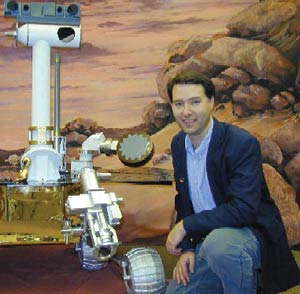
Courtesy Jim Bell
Planetary Scientist Jim Bell wears many hats. Beyond his work with NASA’s Lunar Reconnaissance Orbiter and the Pancam color stereo cameras on NASA’s Mars rovers Spirit and Opportunity, he is also the president of The Planetary Society, an asteroid buff, and the author of several books.
Bell’s cover story “Seeing the Moon Like Never Before” takes a look at some of the spectacular observations the LRO has sent back to Earth from its post above the lunar surface. From a football-field-sized boulder balanced on a mountaintop to erosion patterns in craters, the lunar sights aren’t anything like the mundane little rock you might imagine when you think of the Moon.
Bell checked in with S&T assistant editor Camille Carlisle to talk about the insights our studies of the Moon have brought us, what they could mean for future manned missions, and what excites him about ongoing studies of our solar system.
Listen to the podcast below as you browse through more of the spectacular Moonscapes captured by the Lunar Reconaissance Orbiter:
(If you don't see the player above, access the podcast here instead.)

The farside of the Moon, captured in greater detail than ever before in LRO's global mosaic, reveals a vastly different face from the "man in the Moon" to which we've grown accustomed, thanks to the Moon's tidally locked orbit.
NASA / GSFC / ASU
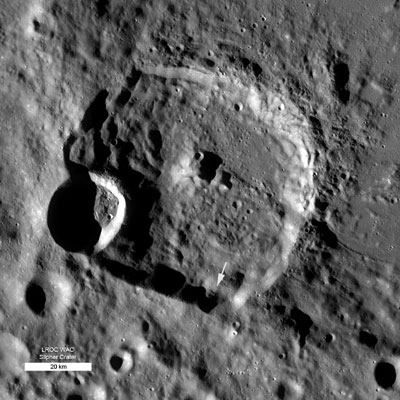
A zoomed-out view of the Slipher Crater, a young formation with an irregular rim.
NASA / GSFC / ASU
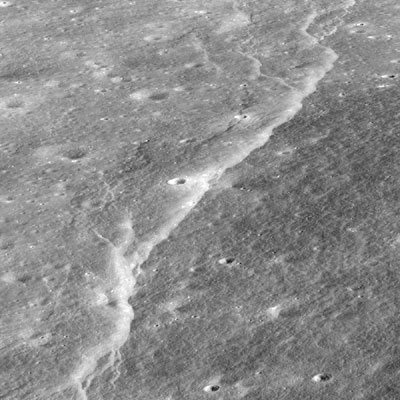
Zooming in on the southern (lower) rim of Slipher Crater reveals a scarp, a buckle in the surface of the Moon that's 3 km (almost 2 miles) long. Wrinkles on the surface emerged as magma deep inside the Moon cooled and froze solid.
NASA / GSFC / ASU
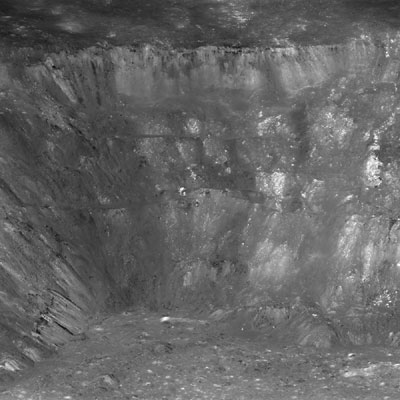
LRO zooms in on the west wall of Aristarchus crater, showing dark impact melts and debris deposits and bright excavated material.
NASA / GSFC / ASU
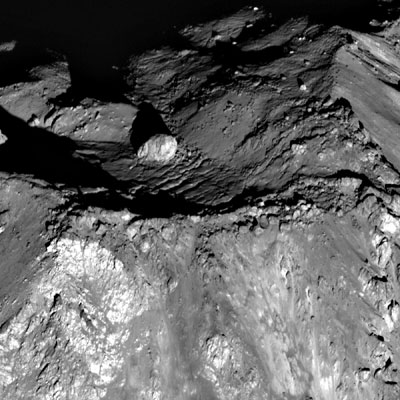
A football-field-sized crater nestles in the central peak of Tycho crater.
NASA / GSFC / ASU
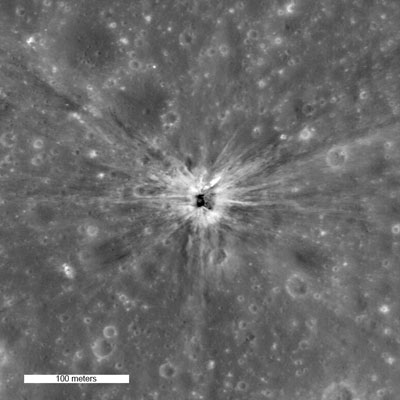
Apollo 13's upper stage was discarded after boosting the Apollo Command Module and Lunar Module into a lunar trajectory, and later crashed into the Moon's surface.
NASA / GSFC / ASU
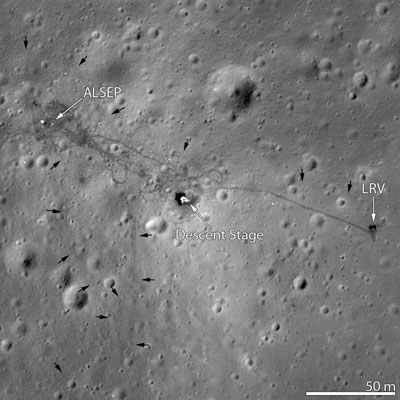
Apollo 15's landing site shows the Lunar Module descent stage, a suite of scientific experiments called the Apollo Lunar Surface Experiments Package (ALSEP), and tire tracks from the Lunar Roving Vehicle (LRV).
NASA / GSFC / ASU
 0
0
Comments
You must be logged in to post a comment.